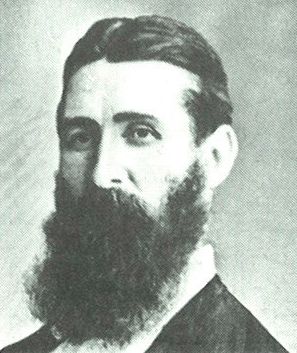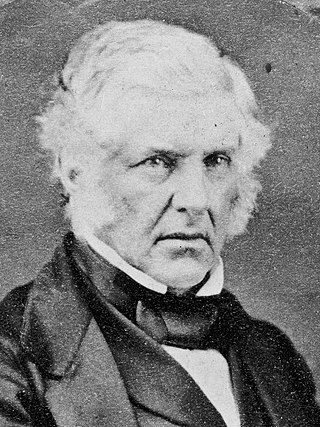Related Research Articles

Sir Harry Albert Atkinson served as the tenth premier of New Zealand on four separate occasions in the late 19th century, and was Colonial Treasurer for a total of ten years. He was responsible for guiding the country during a time of economic depression, and was known as a cautious and prudent manager of government finances, though distrusted for some policies such as his 1882 National Insurance (welfare) scheme and leasehold land schemes. He also participated in the formation of voluntary military units to fight in the New Zealand Wars, and was noted for his strong belief in the need for seizure of Māori land.

New Plymouth is a New Zealand parliamentary electorate. It was first created for the 1st New Zealand Parliament in 1853 and has existed since, with one 32-year interruption. The electorate was initially called Town of New Plymouth.

Sir Donald McLean was a 19th-century New Zealand politician and government official. He was involved in negotiations between the settler government and Māori from 1844 to 1861, eventually as Native Secretary and Land Purchase commissioner. He was one of the most influential figures in Māori-Pākehā relations in the mid-1800s and was involved in the dispute over the "Waitara Purchase", which led up to the First Taranaki War.
Picton was a parliamentary electorate in the Marlborough Region of New Zealand, from 1861 to 1887.
Manuherikia was a parliamentary electorate in the Otago region of New Zealand. It existed from 1866 to 1870 and was represented by two Members of Parliament.
Hawera was a parliamentary electorate in the South Taranaki District of New Zealand from 1896 to 1908. It was represented by two Members of Parliament over the four parliamentary terms of its existence.

Arthur Alfred Richmond Atkinson was a New Zealand barrister and solicitor, Member of Parliament and Wellington City Councillor.

Henry Brown JP was an independent conservative Member of Parliament in New Zealand. He was a prominent saw miller in the Taranaki Region.

Henry Thomson JP was a 19th-century Mayor of Christchurch and Member of Parliament for the Christchurch North electorate in Canterbury, New Zealand.

Richmond Hursthouse was a 19th-century Member of Parliament in Nelson, New Zealand, and a cabinet minister.
The 4th New Zealand Parliament was a term of the Parliament of New Zealand.
Henry Bunny was a 19th-century Member of Parliament in the Wairarapa, New Zealand.

Arthur Samuel Atkinson was a 19th-century Member of Parliament from the Taranaki Region, New Zealand.
The Third Atkinson Ministry was a responsible government in New Zealand, sometimes referred to as part of the Continuous Ministry. It took office after the retirement of Frederick Whitaker and continued the personnel and policies of the Whitaker and Hall ministries.

The 1865 Town of New Plymouth by-election was a by-election held in the Town of New Plymouth electorate during the 3rd New Zealand Parliament, on 19 May 1865. The by-election was caused by the resignation of the incumbent, Charles Brown, and was won unopposed by Henry Sewell. Whilst Sewell was not a local resident, he was a member of the government through his appointment to the Legislative Council, the upper house of Parliament. Sewell accepted the invitation to represent the electorate, as him becoming a member of the lower house was seen to strengthen the government.
The 1867 City of Christchurch by-election was a by-election held on 13 February 1867 during the 4th New Zealand Parliament in the Christchurch electorate of Christchurch.
The 1864 Town of New Plymouth by-election was a by-election held on 18 November 1864 in the Town of New Plymouth electorate during the 3rd New Zealand Parliament.
The 1869 Town of New Plymouth by-election was a by-election held on 28 April 1869 in the Town of New Plymouth electorate during the 4th New Zealand Parliament.
The 1868 Omata by-election was a by-election held on 7 February in the Omata electorate in Taranaki during the 4th New Zealand Parliament.
The Fourth Atkinson Ministry was a responsible government in New Zealand, which lasted less than a week. It formed on 28 August 1884 after the fall of the first attempt at a Stout-Vogel coalition and lasted until Robert Stout and Sir Julius Vogel took back their majority on 3 September.
References
- ↑ Wilson, James Oakley (1985) [First ed. published 1913]. New Zealand Parliamentary Record, 1840–1984 (4th ed.). Wellington: V.R. Ward, Govt. Printer. p. 230. OCLC 154283103.
- ↑ "Election". Taranaki Herald. 4 May 1867.